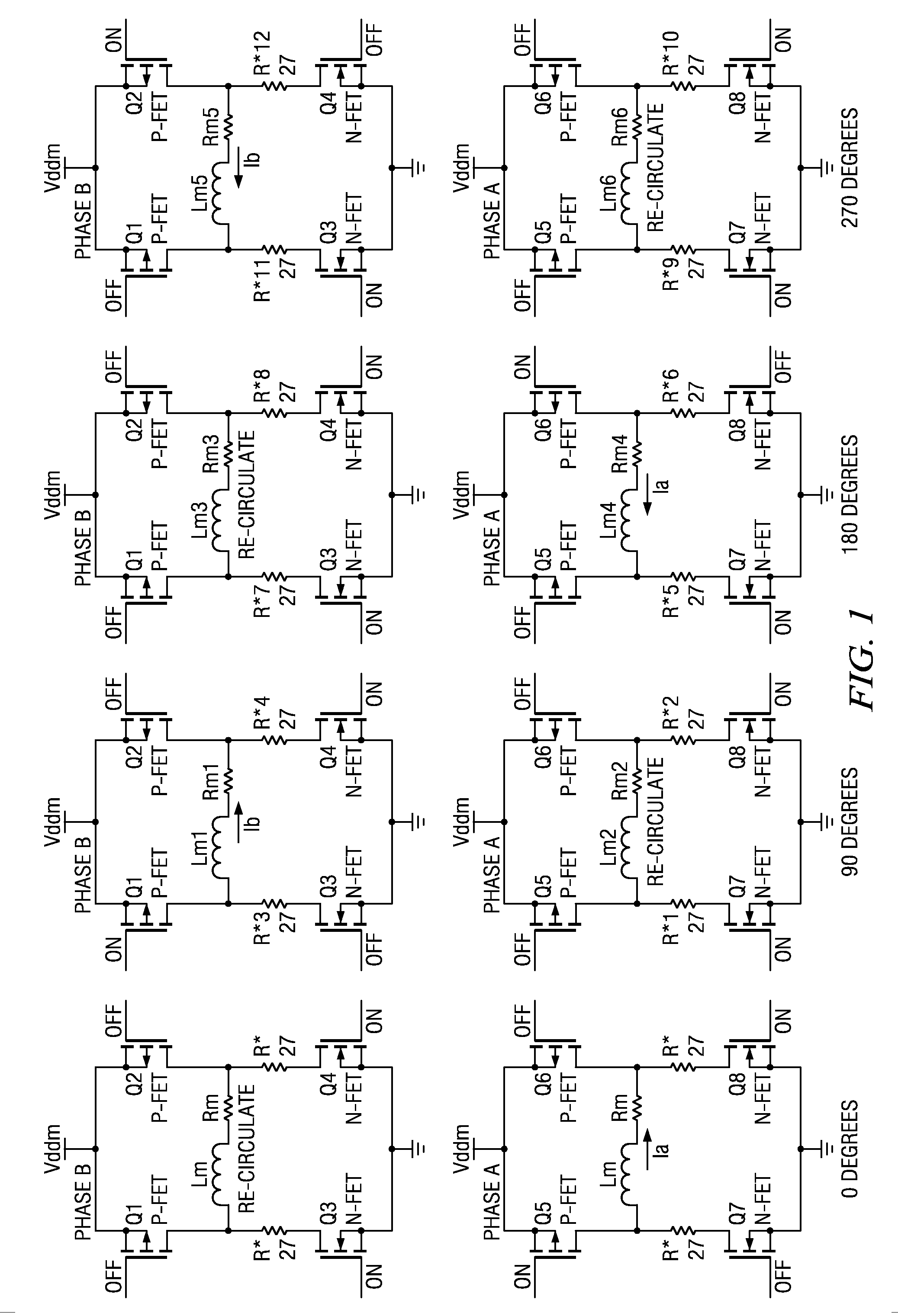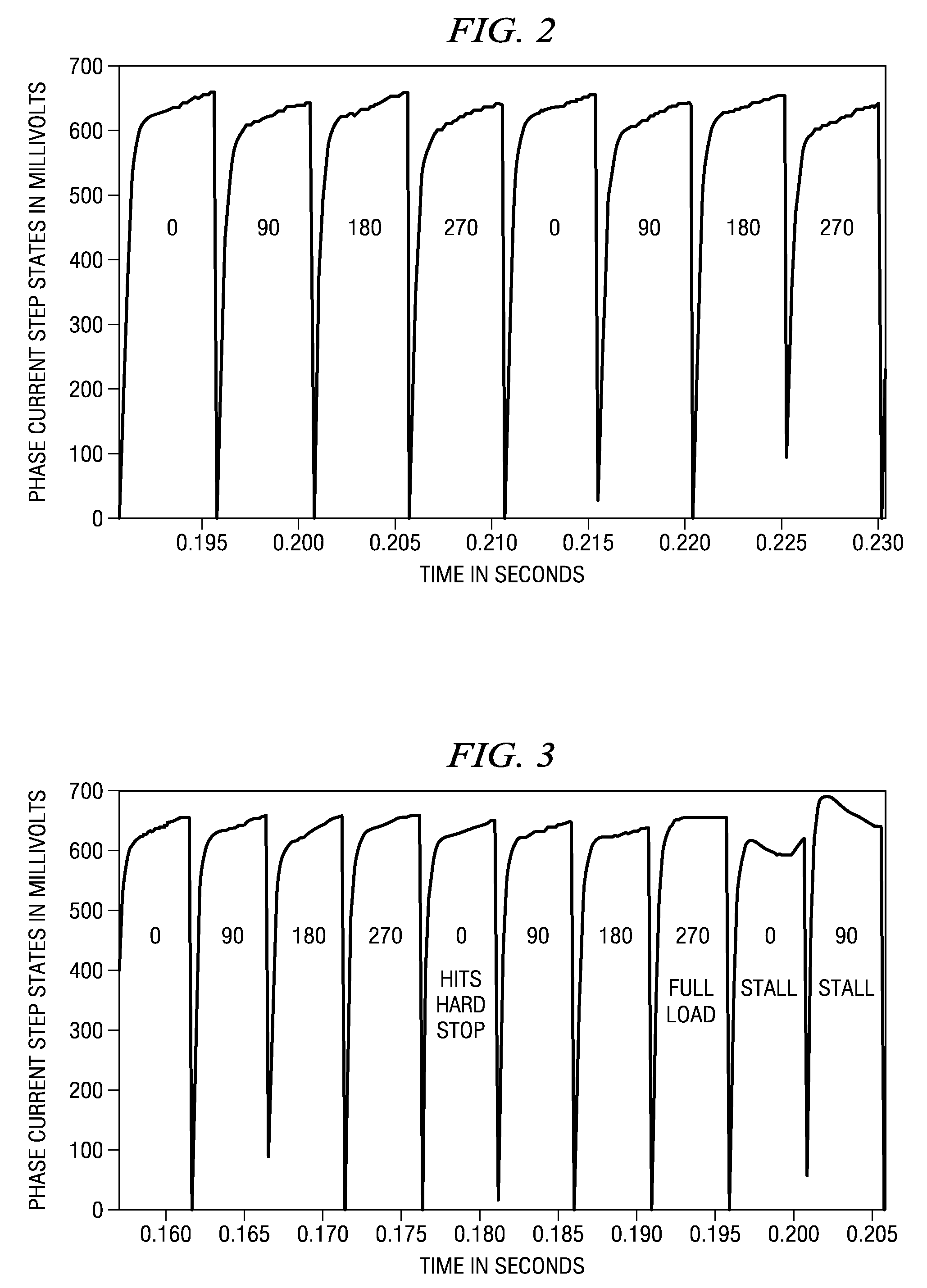Method for stepper motor position referencing
a stepper motor and position reference technology, applied in the direction of electric programme control, dynamo-electric converter control, instruments, etc., can solve the problems of increasing the current step response and the tendency of the instrument stepper motor to kick back off of the hard stop, so as to increase the positioning accuracy, less signal to noise, and high signal to noise ratio
- Summary
- Abstract
- Description
- Claims
- Application Information
AI Technical Summary
Benefits of technology
Problems solved by technology
Method used
Image
Examples
Embodiment Construction
[0017] A stepper motor control system can be driven in many different fashions. For the explanation of this invention, the standard H-bridge architecture will be described with full stepping mode. A stepper motor can be driven in full step mode as shown in FIG. 1. There are four step states in this mode (0°, 90°, 180°, 270°), which correspond to the electrical angle of the motor within a given pole pair. These step states will be used as references in this description.
[0018] While the motor is full stepping at a constant velocity with the steps changing state at a fixed rate, the step response to step response variance between step states will be relatively low. For instance, the step response during step state=0° will be similar to four steps prior, the last time the motor was at this step state. FIG. 2 depicts the constant step to step nature as described. In a system that exhibits a gradual increase of load due to reduction gearing, belt slack, fitting compression and the like, ...
PUM
 Login to View More
Login to View More Abstract
Description
Claims
Application Information
 Login to View More
Login to View More - R&D
- Intellectual Property
- Life Sciences
- Materials
- Tech Scout
- Unparalleled Data Quality
- Higher Quality Content
- 60% Fewer Hallucinations
Browse by: Latest US Patents, China's latest patents, Technical Efficacy Thesaurus, Application Domain, Technology Topic, Popular Technical Reports.
© 2025 PatSnap. All rights reserved.Legal|Privacy policy|Modern Slavery Act Transparency Statement|Sitemap|About US| Contact US: help@patsnap.com



